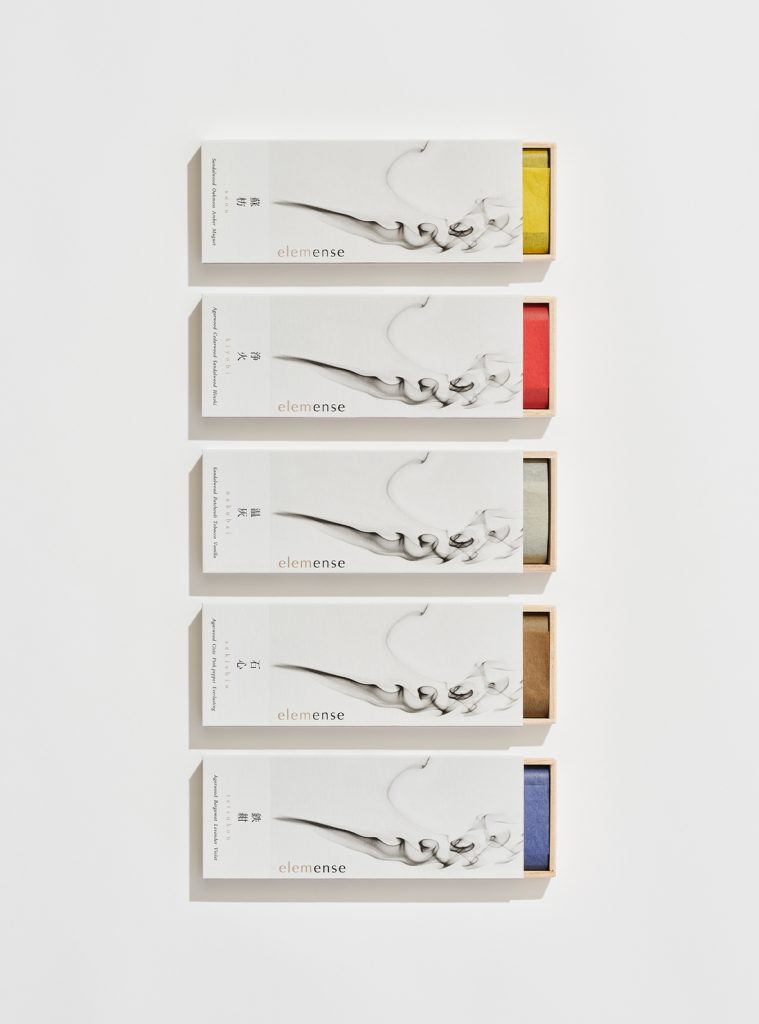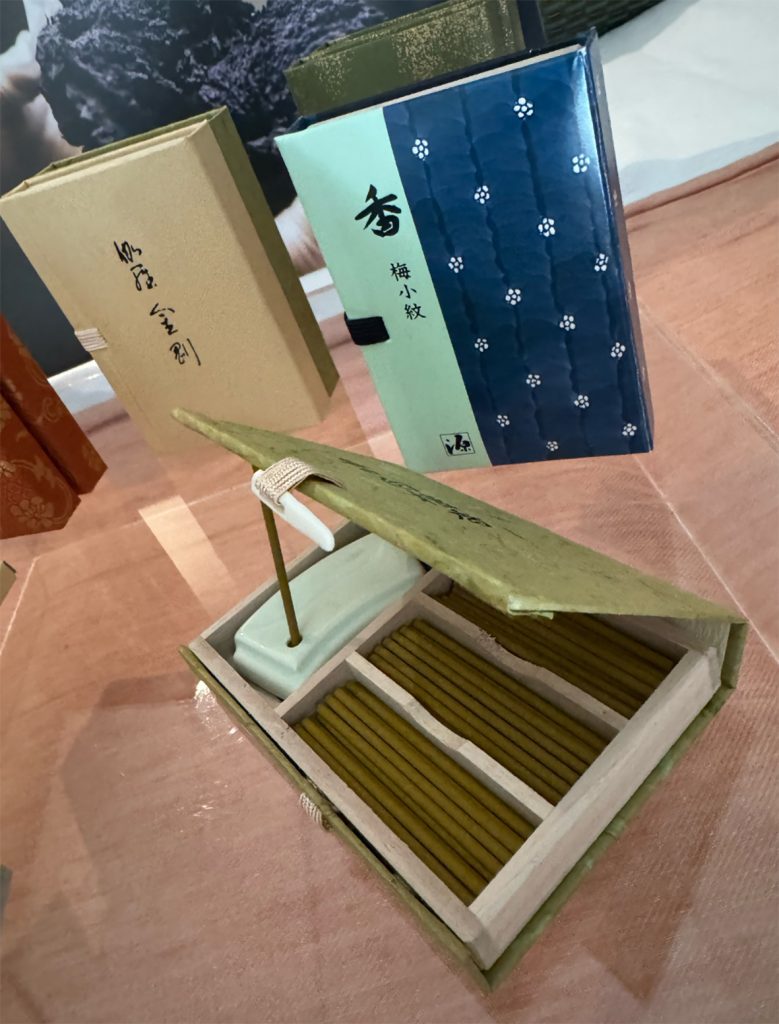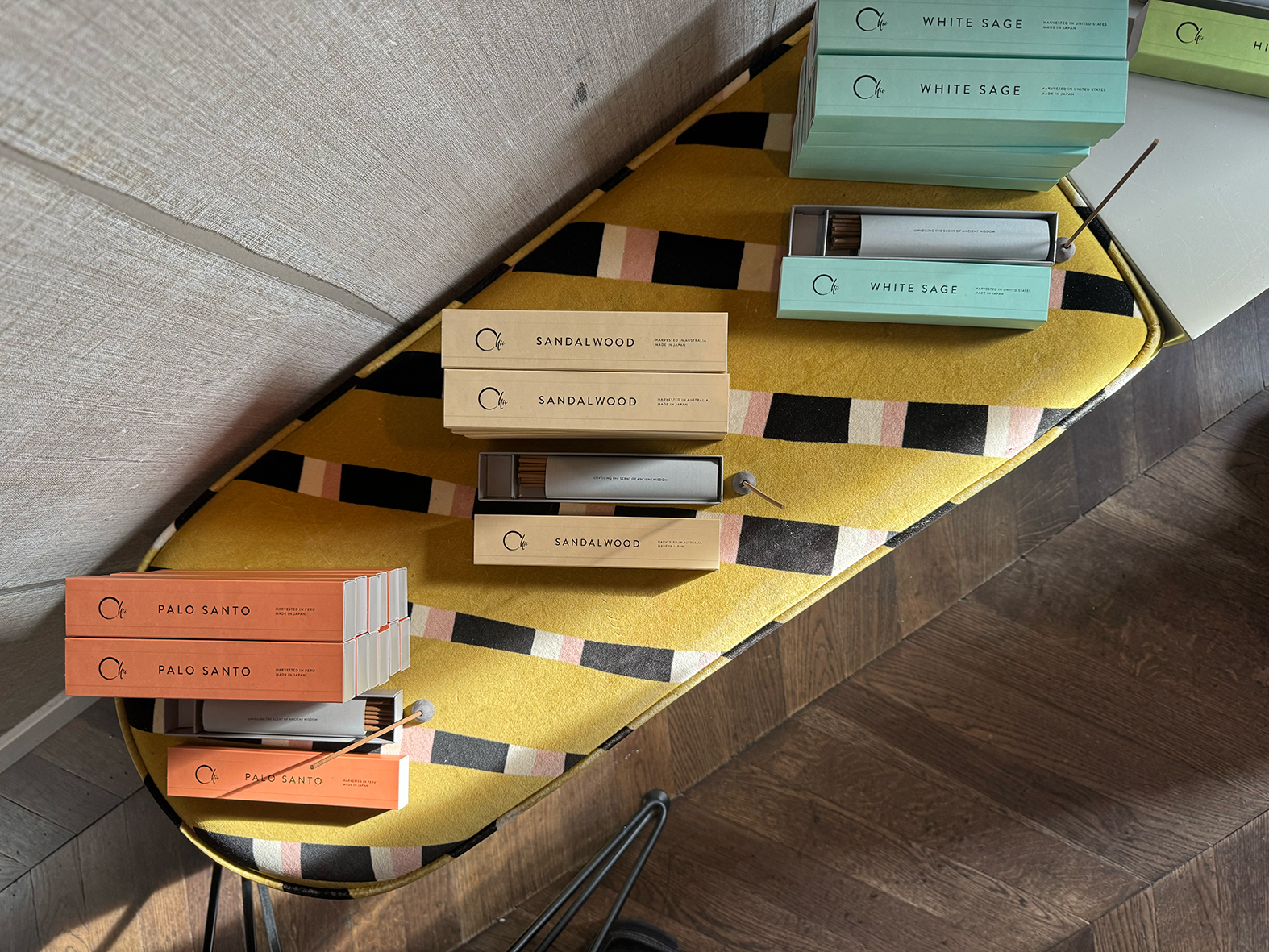The first curl of smoke can tell a story, carrying memories across place and time. Hong Kong’s very name translates as Incense Harbour. This city was the centre of the agarwood trade that linked China, Southeast Asia and beyond. In Japan these fragrance sticks arrive with Buddhism in the sixth century and grow into an art form. Monks use aromatic woods in temples, hosts in tea ceremonies, even samurai perfume their armour before battle.
China and Japan both tie the use of scented sticks to memory, yet their forms differ. In China scented sticks are often made with a bamboo or wooden core. In Japan the form shifts, the sticks pressed from pure aromatic powder without a core, creating another way of burning and a more subtle trail of aroma. In Hong Kong’s temples the practice expands further, with vast coils of perfumed powder hanging from the ceiling, glowing slowly for hours, dedicated to deities and ancestors alike.
For me, scented sticks are always tied to family traditions. My mother used to burn them daily, and later the three sticks at the altar were replaced by an electronic version. Three slim e-sticks with a small light inside glow as if permanently lit. The altar stands on day and night, a steady reminder in the living room even without smoke or scent. When in Hong Kong, I light them twice a day, morning and night. I open the windows first so the air can move before the smoke begins. It is remembrance, a gesture for my ancestors and loved ones. Smoke also lingers at the family altars of Guanyin and of Fuk Luk Sau, the gods of fortune, prosperity and longevity, presences that remain deeply rooted in Hong Kong households. Whenever I smell these rising aromas, I feel a sense of belonging.
At home, I often choose Japanese sticks for their even burn. The gesture is the same yet the feeling shifts, between devotion and design, memory and presence. I carry them when I travel too, even into hotel rooms, to clear the surroundings before I settle in.


A variety of Nippon Kodo incense
Nippon Kodo is a Japanese house with more than four centuries of craft. Their creations carry the refinement of tradition into modern life, made by artisans whose formulas once served emperors. The house is rooted in the tradition of Kōdō, the way of fragrance. At its heart is monkō, the act of “listening” to scent rather than simply smelling it, a practice that shows how fragrance can be both art and habit. They have also collaborated with Byredo and Fornasetti. Byredo is one of my favourites, which I use to remember my parents or to think of loved ones here and in other universes.
Japanese sticks carry their own refinements. Made without a bamboo core, they burn with less smoke, leaving the air clear and precise. You can even shorten the burn by cutting a stick, a detail that makes the ritual more adaptable to the moment. In the end, more than fragrance, they remain a gift for ancestors, for deities, for the dwelling itself. Above all, they invite us to create new practices, shaping a daily moment in our own way.
Images shot by author and from the archives of Nippon Kodo, courtesy of the brand
Discover more at www.skins.nl




